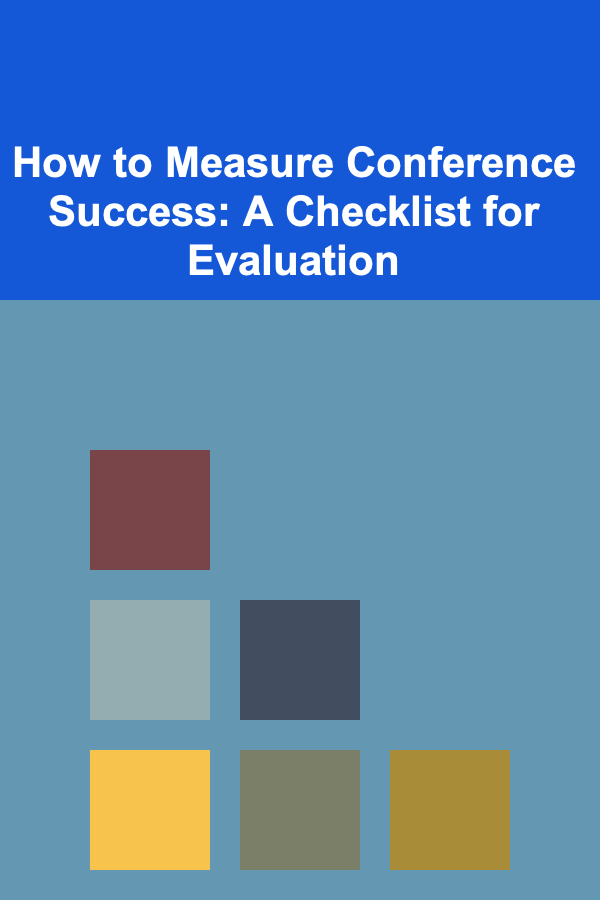
How to Create a Checklist for Staying Hydrated Throughout the Day
ebook include PDF & Audio bundle (Micro Guide)
$12.99$7.99
Limited Time Offer! Order within the next:

Staying hydrated is crucial for maintaining good health and optimal functioning throughout the day. However, in the hustle and bustle of modern life, it's easy to forget to drink enough water or lose track of our hydration habits. A hydration checklist can help you stay on top of your daily water intake and ensure that you're consistently meeting your hydration needs. This actionable guide will walk you through the steps of creating a personalized hydration checklist, discuss the benefits of staying hydrated, and offer tips for building sustainable hydration habits.
Why Staying Hydrated is Important
Before diving into the details of creating a checklist, let's first understand why hydration is so important. The human body is made up of approximately 60% water, and this water is essential for nearly every bodily function, including:
- Regulating body temperature: Water helps maintain temperature balance, especially when you're physically active or in hot environments.
- Supporting digestion: Proper hydration ensures that your digestive system functions optimally, helping to prevent constipation and improve nutrient absorption.
- Boosting energy levels: Dehydration can cause fatigue and sluggishness. Proper hydration helps maintain energy levels and improves cognitive function.
- Flushing out toxins: Water helps the kidneys filter waste and flush toxins from your body through urine.
- Improving skin health: Hydration plays a key role in keeping your skin moisturized and preventing dryness or breakouts.
The benefits of staying hydrated are numerous, and creating a checklist to track your daily water intake can help ensure you're meeting your hydration goals.
Step-by-Step Guide to Creating a Hydration Checklist
1. Set Your Hydration Goals
The first step in creating a hydration checklist is determining how much water you need to drink each day. The general recommendation is 8 cups (64 ounces) of water per day, but individual hydration needs can vary based on several factors, including:
- Body size: Larger individuals may require more water than smaller ones.
- Physical activity level: If you exercise regularly, you'll need to increase your water intake to compensate for the fluids lost through sweat.
- Climate: Hot or humid weather can lead to increased sweating, requiring more water.
- Health conditions: Certain health conditions, such as kidney disease or diabetes, may affect your hydration needs.
To calculate your personalized hydration goals, you can use the following general guideline:
- Divide your body weight in pounds by 2: This is the number of ounces of water you should drink each day. For example, if you weigh 150 pounds, you would aim to drink 75 ounces of water per day.
- Consider physical activity: If you exercise regularly, add 8 ounces of water for every 30 minutes of physical activity.
2. Choose Hydration Reminders and Tracking Methods
To help you stay on track throughout the day, you'll need to choose a method for reminding yourself to drink water. There are several ways to integrate hydration reminders into your daily routine:
- Use a mobile app : There are many hydration tracking apps that send you reminders to drink water throughout the day. Apps like WaterMinder or Hydro Coach can help you log your intake and remind you to take a sip when you're due for more water.
- Set a timer: If you prefer a more hands-on approach, you can set a timer on your phone or use a smart water bottle that tracks your hydration progress.
- Use a hydration journal: If you like tracking things manually, create a simple hydration journal where you write down how much water you've drunk throughout the day. This method can be particularly helpful if you're trying to stay more mindful of your habits.
3. Break Down Your Hydration Into Specific Milestones
Instead of aiming to drink a large amount of water all at once, break down your hydration goals into smaller, more achievable milestones. This will make the task of staying hydrated feel less daunting and ensure that you're drinking water consistently throughout the day. For example:
- Morning milestone: Start your day with a glass of water first thing after waking up to kick-start your metabolism and rehydrate after a night's sleep.
- Mid-morning milestone: Aim for another glass of water between breakfast and lunch. This is also a good time to have a healthy snack.
- Lunch milestone: Make sure you drink water during or after lunch. This can help aid digestion and prevent the post-lunch slump.
- Afternoon milestone: Around mid-afternoon, take a break and drink another glass of water. This can boost your energy levels and help prevent dehydration-induced fatigue.
- Evening milestone: Finish your day with a final glass of water before dinner or during the evening, ensuring you stay hydrated before bedtime.
The key is to pace yourself throughout the day and drink water regularly, rather than trying to consume everything at once.
4. Track Your Water Intake
The next step in creating an actionable hydration checklist is to track your daily water intake. By recording how much water you're drinking, you can stay accountable and assess whether you're hitting your hydration goals.
Some tracking methods include:
- Daily tracking sheet: Use a simple sheet of paper or digital document where you can mark down how many ounces of water you drink each day.
- Water bottles with measurements: Consider using a water bottle that has markings on the side to indicate the amount of water inside. This makes it easier to monitor how much water you're drinking as you go.
- Progress charts: If you're more visual, you can create a chart or graphic that shows your progress. This could be a fun way to stay motivated.
Tracking your intake allows you to see patterns and make adjustments if necessary. If you notice you're consistently falling short of your hydration goals, you can identify which times of the day might need more focus.
5. Incorporate Variety to Keep Hydration Fun
Drinking plain water all day long can get monotonous. To make staying hydrated more enjoyable, incorporate variety into your hydration routine:
- Flavored water: Add a slice of lemon, cucumber, or mint to your water to make it more refreshing.
- Herbal teas: Herbal teas are a great way to increase your fluid intake without relying solely on water.
- Infused water bottles: Consider using an infused water bottle that allows you to add fruits and herbs for natural flavor without added sugar or calories.
- Coconut water or low-calorie beverages: Occasionally switch it up with coconut water or other low-calorie hydrating drinks.
Experiment with different flavors to see what works for you, and don't be afraid to get creative with your hydration choices.
6. Stay Consistent and Review Your Checklist Regularly
Building hydration habits takes time, so consistency is key. Make it a part of your daily routine, and be patient with yourself as you develop the habit. Keep your checklist handy so you can regularly check your progress and make adjustments as necessary. You can evaluate your hydration habits weekly or monthly to see how well you're adhering to your checklist and whether there's room for improvement.
Tips for Staying on Track with Hydration
- Carry a water bottle with you: Having a water bottle nearby makes it easier to sip throughout the day, especially when you're on the go.
- Set hydration goals with a buddy: If you're working with a friend or colleague, set hydration challenges to stay motivated.
- Avoid sugary drinks: Opt for water and low-calorie beverages instead of sugary sodas or energy drinks, which can contribute to dehydration.
- Listen to your body: Thirst is a natural signal that your body needs hydration. Pay attention to your body's cues and drink accordingly.
Conclusion
Creating a hydration checklist is a simple yet effective way to ensure that you're consistently drinking enough water throughout the day. By setting clear hydration goals, tracking your intake, and incorporating variety into your water consumption, you can build sustainable hydration habits that improve your overall health and well-being. The key is consistency---by making hydration a priority, you'll enjoy the many physical and mental benefits that come with staying properly hydrated. So grab your water bottle, make your checklist, and start hydrating!
Reading More From Our Other Websites
- [Personal Finance Management 101] How to Minimize Investment Fees and Maximize Returns
- [Digital Decluttering Tip 101] The Psychology of Email Overload and Why Unsubscribing Matters
- [Home Maintenance 101] How to Avoid Costly Repairs: Mastering Gutter Maintenance for Homeowners
- [Home Space Saving 101] How to Make the Most of Narrow Spaces in Your Home
- [Rock Climbing Tip 101] Smart Gear Choices: How Shoes, Chalk, and Equipment Can Prevent Climbing Accidents
- [Organization Tip 101] How to Maintain Painted Walls and Keep Them Looking Fresh
- [Home Budget Decorating 101] How to Design an Affordable Bohemian Vibe in Your Living Room
- [Home Staging 101] How to Choose the Right Colors for Staging My Home to Appeal to Buyers
- [Organization Tip 101] How to Use a Filing System for Paperwork Management
- [Home Budget 101] How to Save Money on Transportation Costs

How to Make Money Online as a Forum Moderator
Read More
How to Measure Conference Success: A Checklist for Evaluation
Read More
How to Serve Trendy Snacks and Drinks at Your Home Party
Read More
How to Use Behavioral Finance to Improve Your Investment Choices
Read More
How To Master Positive Reinforcement Training for Dogs
Read More
How to Deploy a Web Application to AWS
Read MoreOther Products

How to Make Money Online as a Forum Moderator
Read More
How to Measure Conference Success: A Checklist for Evaluation
Read More
How to Serve Trendy Snacks and Drinks at Your Home Party
Read More
How to Use Behavioral Finance to Improve Your Investment Choices
Read More
How To Master Positive Reinforcement Training for Dogs
Read More